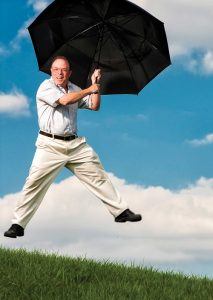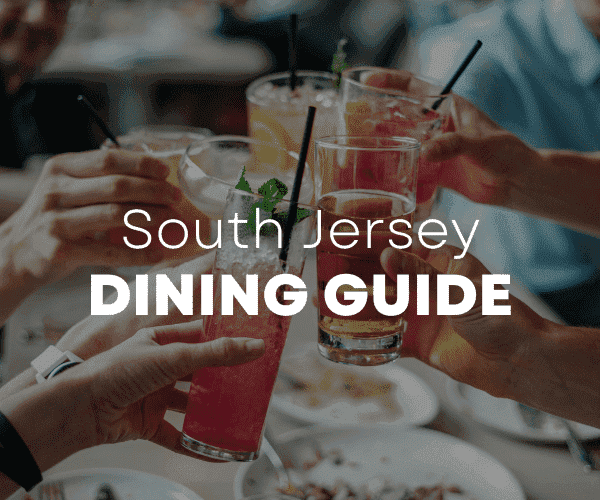

Why did we get so much snow this winter?
We had a fairly persistent weather pattern in which storm systems or low-pressure systems passed southeast of us. When that happens, as long as there’s enough cold air around, it will snow. It was a pattern that was extremely persistent, and we had the second-snowiest winter on record. Every winter has stretches where patterns are favorable for snow, but the persistence of this winter truly won the gold medal.
What do you predict for the summer?
The predictions coming out of the Climate Prediction Center are that this summer will be warmer than normal. We are going into an El Niño pattern and a lot of those El Niño summers were not barnburners with record-breaking temperatures. So hopefully it won’t be that warm.
What do you wish people better understood about weather forecasting?
I wish I had a dollar for every time I heard that our profession is the only profession where you can be wrong and still have a job. I think people’s expectations of what we can do always exceed the strides that science makes. In computer model forecasting, the models themselves over the last 15 years have gained about two days of skill. The five-day forecast we put out today is as accurate as the three-day forecast was in the year 2000. People expect the day six- and seven-day forecasts to be as accurate as the three-day forecast was in the year 2000.
What’s the biggest mistake you personally have made, and how did that situation come about?
I made the mistake on January 7, 1994, and it still bothers me to this day. I’m originally from New York, and I used to be in the NYC forecast office. I came down here in 1993, and I treated Philadelphia more like a coastal city like New York. There was a freezing rain situation in which it looked like we’d get some freezing rain to start and then it would turn over to rain. The evening before, temperatures in Wildwood were already in the 40s, and I thought all that air would come west. About an inch of ice later we had the worst or second-worst power outage in the history of PECO Energy. It was a major ice storm. I underestimated the amount of cold air that was around, and I also underestimated the geography involved. Philadelphia isn’t 10 miles from the coast, it’s 60 miles from the coast. The warm air never got to Philadelphia.
What is the future of hurricanes and big storms at the Jersey Shore?
We are always going to be under the gun. When El Niños develop, the total number of tropical systems tends to be lower. That’s because the higher winds in the troposphere end up shearing the hurricanes apart, and they tend to be weaker. But Hurricane Andrew happened during a strong El Niño pattern, so it’s more a question of where they go than how many of them there are. Unfortunately, it’s just the nature of the business here that you are always going to have the threat of tropical systems. Generally, storms come up through North Carolina first and that weakens them, but Sandy took such an anomalous route that there was no protection for us. There’s a 30-year cycle in which tropical activity is greater, and then a 30-year cycle where there’s less of a threat. We’re in the middle of this uptick cycle, so we have a greater chance now.
Why does it seem like there are so many more natural disasters?
There is an uptick in activity in general in terms of systems. When you look at what global temperatures were in 1900 versus what they are now, we are warmer. A byproduct of that is the atmosphere will hold more water. When that water eventually comes down again, whether in the form of snow or rain, it’s going to be heavier and cause more problems.
There’s also a constant 24-hour news and weather cycle, so information that may have occurred 30 or 40 years ago in other parts of the world, you may not have heard about.
It feels like we no longer have four seasons, that winter jams right into summer. Why is this happening?
We really don’t have too many springs here. Springs are always tough seasons. Because the ocean off the Jersey coast is still relatively cold, you get a flow off the ocean that’s chilly, especially when the winds are coming from the east. My daughter played soccer, and games started in March. To add a twist to a Mark Twain expression, the coldest winter I ever spent was my daughter’s March soccer games. But going from summer to winter doesn’t seem to be so abrupt. November is one of those months that has actually warmed over the last 100 years.
The jet stream is often mentioned in forecasting. What exactly is it?
It’s basically a river of fast-moving air that occurs near the boundary of the troposphere, where most weather occurs, and the stratosphere, the next level up. It’s the steering current for weather systems. It’s like a stick in a river – if it’s small enough, it can’t float upstream, it has to go with the general flow. That’s how most systems end up getting steered in one direction or another. When forecasting, especially winter weather, the jet stream is very important.
What is the role of the National Weather Forecast’s Mount Holly office?
The scrolls at the bottom of the TV that issue forecasts, advisories and warnings – that’s us. Our office is responsible for all the forecasts and warnings that cause harm to persons or property damage for 16 of the 21 counties in New Jersey, Delaware, the Maryland Eastern Shore and about the eastern third of PA. Besides the public forecasts, we also issue forecasts for the aviation and marine communities.
How’s next winter going to be?
It looks like we’re going into an El Niño type pattern, and El Niño winters tend to be feast or famine in terms of snow and cold. Usually, the stronger the El Niño gets, the warmer the winters get and less snowy they get. Regardless, they tend to have more nor’easters, which end up being more rain than snow. There are hardly ever any perfect forecasts, but since the 1950s we’ve seen that if there’s a big snow event in December, that pretty much sets the benchmark for the rest of the winter.









